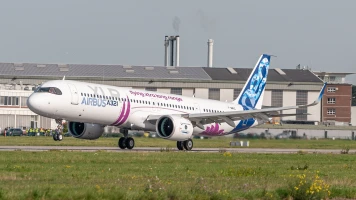aviation
A boom in the skies over India
India is now the world’s most populous country, and its aviation industry is racing to keep up by placing huge aircraft orders. Nowhere is the market growing faster.
author: Andreas Spaeth | 6 mins reading time published on: 07.11.2023
author:
Andreas Spaeth
has been traveling the world as a freelance aviation journalist for over 25 years, visiting and writing about airlines and airports. He is frequently invited to appear on radio and TV programs to discuss current events in the sector.

The first day of the Paris Air Show in June 2023 was also the most important, at least from the perspective of aircraft manufacturers. After months of speculation, the management of IndiGo, market leader in domestic flights on the subcontinent, finally signed the airline’s record order from Airbus: “Never has anyone placed 500 firm orders in one go,” said Pieter Elbers, the airline’s Dutch CEO, visibly moved. This is the number of A320neo family jets IndiGo will receive starting in 2030; it will be taking delivery of some 480 new Airbus jets from previous orders even before then. “The aircraft are to support growth and to replace older aircraft,” Elbers explained.
IndiGo is a phenomenon. It was founded only in 2006 by two industry veterans, Rahul Bhatia and Indian-American billionaire and former US Airways CEO and chairman Rakesh Gangwal. Today, it flies more than 1,800 daily connections to 78 destinations in India. “That already makes us the seventh largest airline in the world,” Elbers said. This isn’t the first order record to have been set by the highly profitable, efficient IndiGo. It is currently the world’s largest operator of Airbus A320neo family jets. The record order in Paris brought the total number of Airbus aircraft ever ordered by IndiGo to an incredible 1,330—all in less than two decades.
IndiGo – the order king
Start of operations: August 4, 2006
Domestic market share in May 2023: 61%
Aircraft orders:
-2005: 100 Airbus A320-200
-2011: 180 Airbus A320-200
-2015: 250 Airbus A320neo family
-2019: 300 Airbus A320neo family
-2023: 500 Airbus A320neo family
Jet fleet at start of 2023: 268
(25 x A320, 176 x A320neo, 94 x A321neo)
Growth phenomenon IndiGo enters the long-haul market
With two Boeing 777-300ERs leased from Turkish Airlines, IndiGo is currently also entering the long-haul market with widebody aircraft, initially flying from Delhi and Mumbai to Istanbul. Industry circles believe that IndiGo could soon order its own Boeing 787s. “IndiGo’s spectacular growth and ambitious orders have helped move India from 13th place in the list of the world’s top aviation markets to third,” says Mike Malik of aviation data analytics firm Cirium.
Previously, the world’s largest aircraft orders have come from the United States, while China has also regularly placed orders worth billions with Airbus and Boeing. Since February 2023, however, India has been at the forefront. One milestone was the recently privatized Air India’s letters of intent to purchase a total of 470 new jets from the two major manufacturers. Taken together with leasing agreements for 36 additional aircraft to meet immediate needs, this already represented a new industry record at the time. Air India CEO Campbell Wilson also signed the purchase agreements in Paris, with the first new Airbus A350 aircraft set to arrive as early as fall 2023. And Air India also wants more: “We will be placing more orders. It will be quite a long time before all 470 aircraft now on order reach us, but we won’t wait that long with our next order,” Wilson said.
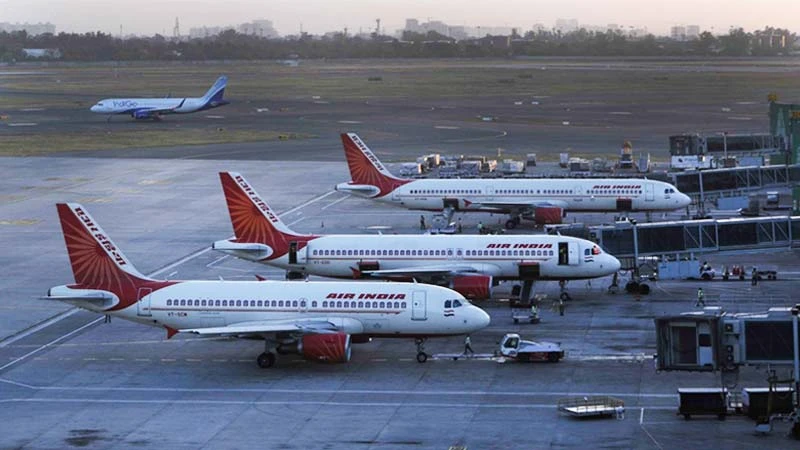

©Andreas Spaeth


©Andreas Spaeth
Air India: The airline is the flag carrier of India, headquartered in New Delhi.
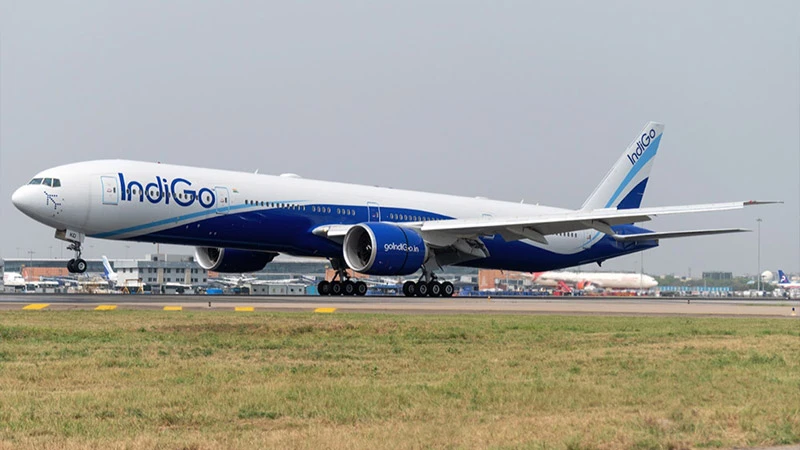

©IndiGo


©IndiGo
IndiGo: IndiGo Airlines was founded at the beginning of 2006 by Rahul Bhatia and Rakesh Gangwal.
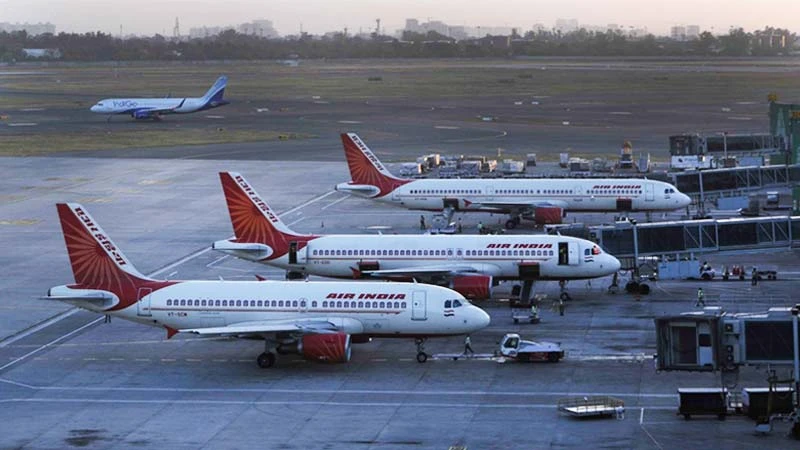
©Andreas Spaeth
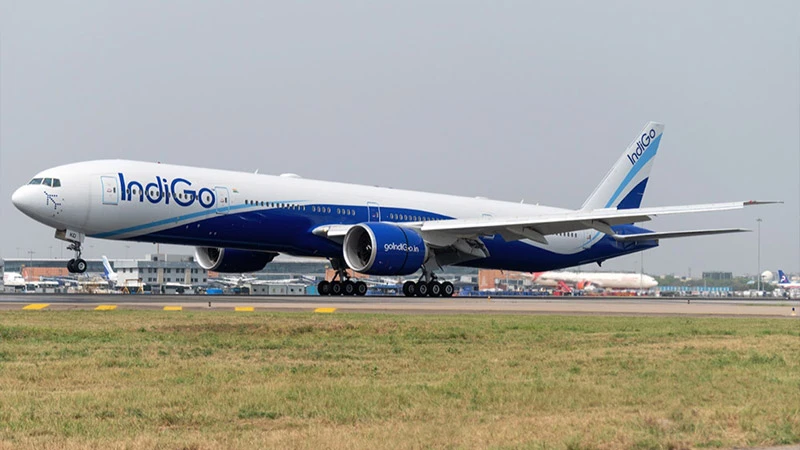
©IndiGo
India has huge pent-up demand for aircraft
But why does India suddenly need so many aircraft? The short answer is amazingly simple: because India is now the country with the world’s largest population. According to the International Monetary Fund (IMF), the subcontinent is now home to 1.42 billion people, ahead of China (1.4 billion). At the same time, India’s population is very young, with an average age of 28, which promises much higher demand in demographic terms. This is one of the reasons why India’s economy is on a steady growth course. “India is a huge growth market. If you consider how many people are flying in China today, it will amount to the same or even more in India,” says Marko Niffka, Director Business Development at MTU Aero Engines. “I was in charge of the India market for MTU until 2012. Since then, competition there has become more mature, as shown by the consolidation that has been going on among the airlines.”
Most importantly, India has a huge untapped potential of air passengers; only 4 percent of the population has ever flown. This was due to excessively high airfares and often a lack of airports and connections, especially in rural areas. After the Indian government liberalized many areas of the aviation sector, there was less to hinder the boom that is currently underway.
Until now, mobility in India has often entailed traveling by railroad, but especially by bus—a significant source of emissions. Modern aircraft such as the A320neo, on the other hand, emit fewer pollutants per kilometer and per capita. Of course, larger air fleets overall will also drive up emissions from India’s aviation industry. But on the flip side, a higher proportion of air travelers also means fewer journeys in outdated buses. IndiGo has also announced plans to replace its older A320ceo aircraft with new A320neo aircraft.
The Indian aviation market in figures
1
.
42
billion
Inhabitants
28
years
Average age
4
%
Air travelers as a percentage of the population
148
Airports
168
million
Passengers in 2019
1,1
billion
Passenger forecast for 2040
Number of active Airbus/Boeing aircraft til the end of 2023: 816
Aircraft by 2030: approx. 2,000
Orders to be delivered: approx. 2,200 (for orders prior to June 2023)
Too few airports on the subcontinent
One reason that air travel has played a smaller role to date is that many regions of the huge country have so far had no airports, while those in smaller cities have offered too few connections. A government funding program is in place to create improvements by subsidizing routes to the provinces as well as airport construction away from major centers. While it’s true that Mumbai, one of India’s major hubs, continues to make do with a single runway, the number of airports in the country has increased from 74 to 147 in the past nine years. Another 80 are expected to begin operations in the next five years.
By the end of the 2030s, India could well have become the world’s second-largest aviation market, behind the U.S. and ahead of China, according to industry estimates. And about two decades from now, it may even overtake the U.S., today’s leading market. Between 2010 and 2019, the total annual number of passengers within and to/from India increased from about 65 million to 168 million. By 2040, the Indian government plans to increase that total six-fold to some 1.1 billion. “We will see a boom in air traffic in the years ahead,” announced Jyotiraditya Scindia, Minister of Civil Aviation.

©iStock
Kolkata, India: The international airport is a major hub for northeast India, Bangladesh, Bhutan, China and Southeast Asia.
India needs one thing above all: aircraft
To catch up, what India needs above all else is aircraft. As of today, there are just over 700 of them in the whole country. That’s a paltry figure compared to the U.S.—American Airlines alone, one of the country’s big three airlines, operates more than 900. By 2038, Boeing predicts that India will need 2,380 new aircraft. Meanwhile, the government is increasingly demanding that Airbus and Boeing also set up final assembly lines in India, as Airbus is doing in Tianjin, China, for example.
Onerous local conditions, for example as regards tax policy and bureaucracy, have been a stumbling block so far, although the government has already taken measures to improve them. And yet MRO in particular is a more important consideration on the subcontinent than elsewhere: “In India, air pollution and high temperatures also mean that the engines on new aircraft have to undergo maintenance sooner than, say, in northern Europe,” Niffka explains. What is clear is that the dynamism in today’s global aviation market is emanating from Delhi, Mumbai and Bangalore, and all providers will adapt to this fact.
Engine overhaul in India
“For many Indians, flying has come to have the same significance as local public transport has for Europeans: for them it’s a routine way to get around,” says Florian Rietmann, Sales Director Asia at MTU Maintenance. The environmental conditions combined with the high usage leads to a high MRO demand. To date, however, a large part of engine MRO for India’s airlines still takes place exclusively outside the subcontinent.
“It’s only now that we’re seeing the planning of local maintenance companies slowly emerge,” Rietmann says. He adds that this is a high priority for the Indian government: “India generally wants to strengthen maintenance, repair and overhaul (MRO) in the country, as 90 percent of these services have thus far been rendered abroad. This not only deprives the country of know-how, but can also lead to problems in logistics, for example when freight costs skyrocketed during the pandemic,” Rietmann says. “Moreover, these services are expected to burgeon in the future, mainly on the back of these giant orders for aircraft—and since MRO is paid for in U.S. dollars, this growth could cause a trade deficit in India. In addition to traditional engine repair, there is thus growing interest in other services in our portfolio, such as engine leasing, maintenance planning consulting, and various asset management solutions,” he adds.






